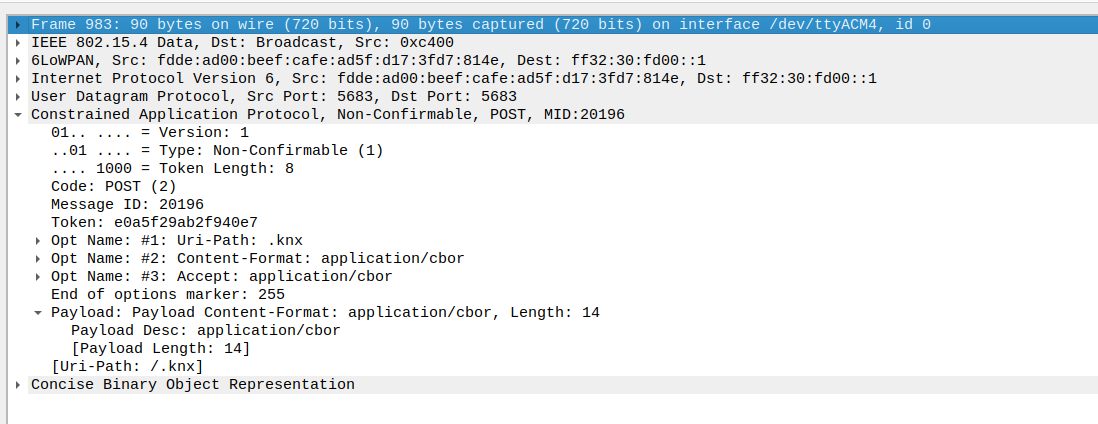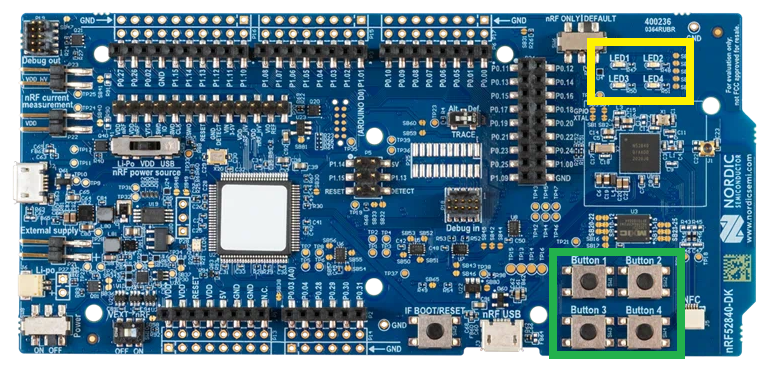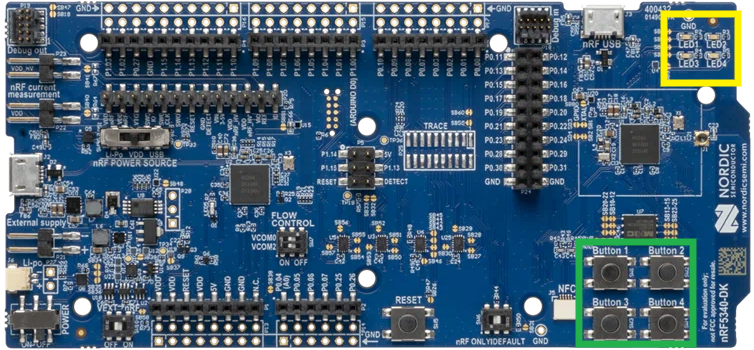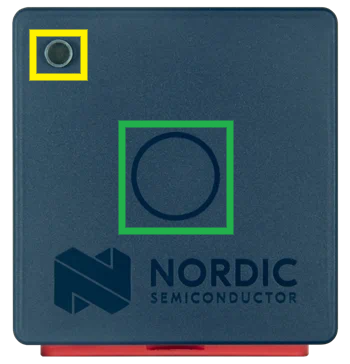KNX IoT testing¶
With the Light Switch Actuator and Light Switch Sensor installed, you will be able to test a simple KNX IoT system consisted of two Thread-based devices.
Starting Thread network¶
The devices enable the Thread interface during startup automatically. They are configured to create and join Thread network with the following parameters:
Parameter |
Value |
|---|---|
PAN ID |
0xabcd |
Channel |
11 |
Network name |
KNX |
Extended PAN ID |
dead00beef00cafe |
Network key |
00112233445566778899aabbccddeeff |
To verify Thread devices status, do the following:
Check active data.
uart:~$ ot dataset active Active Timestamp: 1 Channel: 15 Channel Mask: 0x07fff800 Ext PAN ID: 3b78ce629cbc8e23 Mesh Local Prefix: fdd7:9fa0:468:ba1b::/64 Network Key: 00112233445566778899aabbccddeeff Network Name: OpenThread-7cf7 PAN ID: 0x7cf7 PSKc: b2e04e90cef89d25981a7dd8f3c16db5 Security Policy: 672 onrc Done
Verify devices’ roles.
Check if one of devices is set as a Thread leader.
uart:~$ ot state leader DoneCheck if another device is either a Thread child or leader:
uart:~$ ot state child Doneuart:~$ ot state leader Done
Connecting Light Switch Sensor to Light Switch Actuator¶
KNX IoT devices, just as the classic KNX devices, consist of one or many Functional Blocks. Functional Block contains one or more Datapoints which are its inputs, outputs, and parameters.
The most important feature of Datapoint’s description is its type. The type specifies how the Datapoint is encoded, its supported range, units, an so on. All Datapoints of a given Functional Block and featured types are described in the KNX Specification page.
Both Light Switch Actuator and Sensor - depending on the boards used - are built with 1, 3, or 4 Functional Blocks with a single Switch On/Off Datapoint (type name: DPT_Switch, id: 1.001). Every Datapoint either controls a single LED (Actuator) or is controlled by a single button (Sensor). For communication between KNX IoT Point API, devices send s-mode messages over the CoAP protocol. A board that is the recipient of the s-mode message checks its Group Object Table to confirm if the message can be processed.
The following tables present configuration of Datapoints for Light Switch Actuator and Light Switch Sensor devices:
Light Switch Actuator Datapoints:
LED
Path
GET
SET
Comment
LED1
/p/1
Yes
Yes
LED2
/p/2
Yes
Yes
LED3
/p/3
Yes
Yes
LED4
/p/4
Yes
Yes
Not available for Thingy:53
Light Switch Sensor Datapoints:
Button
Path
GET
SET
Comment
BUTTON1
/p/1
Yes
No
BUTTON2
/p/2
Yes
No
Not available for Thingy:53
BUTTON3
/p/3
Yes
No
Not available for Thingy:53
BUTTON4
/p/4
Yes
No
Not available for Thingy:53
Location of LEDs and buttons¶
Pictures below present locations of LEDs (yellow rectangles) and buttons (green rectangles) used in the samples.
Sniffing KNX IoT Point API communication¶
In order to inspect the packets exchanged between KNX devices, the 802.15.4 sniffer can be used. To capture CoAP messages sent through a default port (5683), set up the Wireshark as described in sniffer configuration with regard to default configuration specified in the Starting Thread Network section.

Figure: Capture of CoAP messages.¶

Figure: Content of CoAP message.¶
Sample cases¶
Configure Actuators and Sensors based on the following cases:


